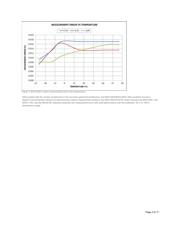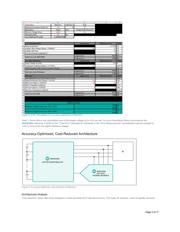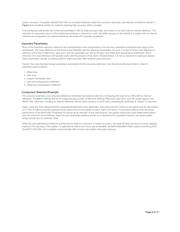herunterladen

Maxim > Design Support > Technical Documents > Application Notes > A/D and D/A Conversion/Sampling Circuits > APP 5760
Maxim > Design Support > Technical Documents > Application Notes > Battery Management > APP 5760
Maxim > Design Support > Technical Documents > Application Notes > Voltage References > APP 5760
Keywords: analog to digital (ADC), battery measurement/management, cell measurement
APPLICATION NOTE 5760
Getting the Most Out of the MAX14920/MAX14921 High-Accuracy
Battery-Measurement AFEs
By:
Jeremy
Georges
Jan 29, 2014
Abstract:
The MAX14920/MAX14921 is a high-accuracy battery-measurement analog front-end (AFE) ideal for cell balancing and battery-
measurement applications. The performance of the system in which the MAX14920/MAX14921 is used, however, depends highly on the
components that support and surround it. This application note provides a framework for, and examples of, selecting system architectures
and building blocks that meet diverse accuracy and cost requirements.
A similar version of this article appears on EDN, November 19, 2013.
Introduction
The MAX14920/MAX14921 are high-accuracy battery-measurement analog front-ends (AFEs) for monitoring up to 12 and 16 battery cell
voltages, respectively. The excellent accuracy and unique sample-and-hold architecture of the MAX14920/MAX14921 is ideal for monitoring
cell chemistries with nearly flat discharge curves, such as lithium phosphate cells, but it can also be used in applications where accuracy is
not the tightest constraint.
As a building block, the overall performance of the MAX14920/MAX14921 is highly dependent on the network of ICs surrounding it. This
application note provides a framework for, and examples of, selecting system building blocks that meet diverse accuracy and cost
requirements.
Building a System that Meets Your Needs
While designing systems, engineers often face cost, space, and accuracy constraints that dictate how an engineering solution is constructed.
Some systems, such as lithium phosphate cell monitoring, require an accuracy-optimized solution due to the nearly flat discharge curve of
that battery chemistry. Other common lithium chemistries do not have as much flatness to their discharge curves, and lower accuracy may
be acceptable in such applications.
Building a battery-monitoring system with the MAX14920/MAX14921 that meets the needs of a specific application is mostly an exercise in
optimizing the system toward a subset of the design constraints mentioned above. Such a task is most easily accomplished when design is
broken into three stages:
1.
Select an architecture.
2. Determine important parameters.
3. Select system components.
It is advantageous to begin by selecting architecture since it is the primary driving force behind optimization toward a particular constraint.
The following is a list of architecture options; each aimed at optimizing specific design constraints. The subsequent analysis of each
architecture will include guidelines for proceeding through stages two and three of designing a system as mentioned above. Given the wide
selection of capable components and the fact that each architecture can be used in a range of systems with very different needs, the
guidelines for the third step, selection of system components, will be handled by offering an example of each respective architecture. For
quick reference, Table 1
shows the relative cost, maximum expected six-sigma error, and maximum expected three-sigma error of the
architectures covered by the following analysis. The six-sigma error denotes the maximum error statistically expected on 99.99966% of all
boards built using the respective architecture, while the three-sigma error denotes the maximum error statistically expected on 99.73% of all
boards built using the same architecture.
Page 1 of 17








